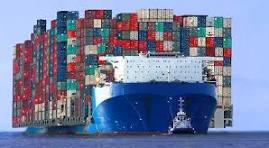
-Expansion of financial, trade and business activities across borders is called Globalization.
-Started in 1980s.
-Market efficiency increase and competition plays healthy roles in global markets.
-Four aspects of globalization are – trade, capital movement, people movement and spread of knowledge and technology.
-Gaps between rich and poor nations increasing despite globalization.
-Gaps between rich and poor within a country increasing; this is a cause of concern.
-Average income increased but it is not evenly dispersed across societies and nations.
-This trend would contribute despite its negative features and limitations.
Experts view globalization as a process that is beneficial and inevitable and irreversible. Some experts aver that it increases inequality within and between nations, threatens employment and liming standards and thwarts social progress. Globalization aims to identify ways in which countries can tap the gains of this process, while remaining realistic about its potential and risks. Globalization offers opportunities for worldwide development but it is not progressing evenly. Some countries are integrated into global economy more quickly than others. The Countries that integrated are seeing faster growth and reduced poverty. Outward – oriented policies brought dynamism and greater prosperity to East Asia.
The term came into usage since the 1980s, reflecting technological advances and brisk international transactions (trade and financial flows). It refers to an extension beyond national borders of the same market forces that have operated for centuries at all levels of economic activity – village markets, urban industries or financial centers.
Markets promote efficiency through competition and the division of labour. Global markets offer opportunities to people for exploring larger world markets. They can have access to more capital flows, technology, cheaper imports and larger export markets. But markets do not ensure that benefits of increased efficiency are shared by all. Countries must be prepared to embrace policies; poorest countries may need support of international community while embracing this concept.
Twentieth century saw economic growth but this growth was not steady. Trade expansion led to trade and financial liberalization. Then, countries retreated into closed economies, protectionism and capital controls. Per capita income growth fell to less than one percent during 1913 -1950. For the rest of the century, population grew at but per capita income growth was over 2 percent.
Average income growth was seen but progress was not evenly dispersed. Gaps between rich and poor countries and rich and poor people within countries have increased. World trade and financial markets are becoming more integrated. Poor countries and masses are catching up with the advanced economies but it is easier said than done. In Asia, per capita incomes have been moving towards levels in industrial countries since 1970. Many developing countries have made slow progress. Per capita incomes in Africa have declined relative to the industrial countries. In some countries, they have declined in absolute terms.
Four aspects of globalization are as follows: (1) Trade: Developing countries as a whole have increased their share of world trade – from 19 percent in 1971 to 29 percent in 1999. Newly Industrialized Economies (NIEs) of Asia did well while Africa failed. Export of manufactured goods is a big factor. The share of primary commodities in world exports – such as food and raw materials (produced by poorest countries) has declined. (2) Capital movement: Private capital flows to developing countries during much of the 1990s sharply increased with the tenet of globalization. It also shows that (a) the increase followed a particularly “dry” period in the 1980s. (3) people Movement: Workers move from one country to another partly to find employment opportunities. In 1965 -90, the proportion of labour forces round the 2world world that was foreign born increased by one-half. Most migration occurs between developing countries. The flow of migrants to advanced economies is likely to provide a means through which global wages converge. (4) Spread of Knowledge and Technology: Information exchange is an integral, often overlooked, aspect of globalization. FDI effects expansion of physical capital stock and technical innovation. Knowledge about production methods, management techniques, export markets and economic policies is available at low cost.
Globalization would continue. It has negative features but it cannot be stopped.
